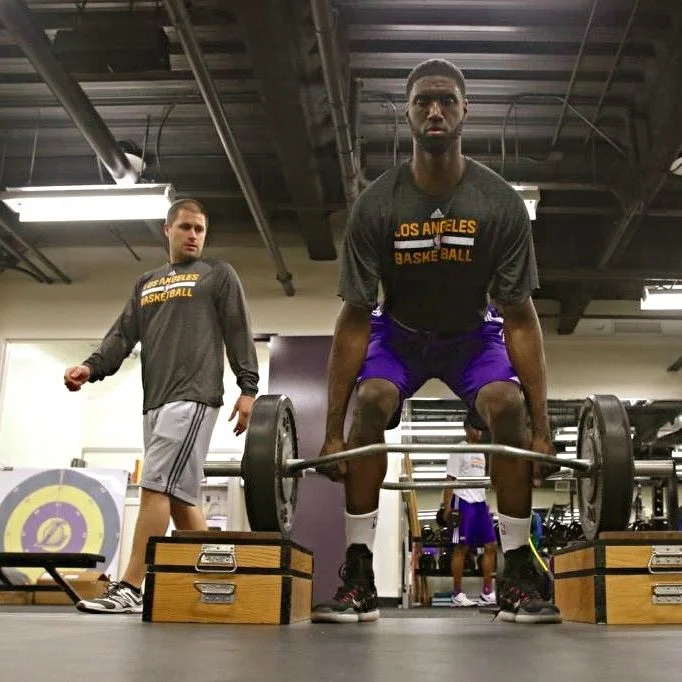I see athletes crash and burn in the off-season for 2 common reasons: 1. They view it as a vacation and simply don't do the necessary work. 2. They complicate the off-season training approach and try to do too much. Let's discuss how to avoid either of these extremes and nail down the basic blueprint for major off-season success.
Viewing entries in
Movement
I get some version of this comment/question regularly: "I'm looking to get rid of some of this belly fat so I'm going to ramp up my cardio, any other tricks you got for me TD?" First off, relieve yourself from thinking that the sole solution lies at the gym. What if a major key to sparking body composition change actually lies at the grocery store or in your kitchen?
Strength needs to be a priority. Young, old, athletic or not, building strength will help you. Making an exercise more challenging to execute might look cool but it can compromise it's ability to help you build strength.
Matthew Ibrahim is the Owner of Mobility 101 and the Director of Sports Performance at Boston Physical Therapy & Wellness. He is on a mission to help athletes and clients build stronger, more resilient human movement and performance. Connect with Matthew on Facebook, Instagram, and Twitter. Learn more about Mobility 101 on www.mobility-101.com.
To avoid plateaus in your single leg training you must progress to more comprehensive challenges. Advanced single leg performance demands synergy from the lower body, the core and the upper body.
Painful or disfunctional ankles, knees or hips can make it difficult to get the most out of your training efforts.
Physical training is more than breaking a sweat or burning calories - it's about skill acquisition. The Band Resisted Single Leg Stand-Up is an example of how learning a fundamental physical skill translates into training results.
Bench bridge (aka hip thrust) variations help you to develop your ability to drive force into the ground via hip extension. Applying force into the ground is what propels you up (jumping) and forward (sprinting/running) - areas that most people would be happy to make gains in.
Incorporating this exercise into your training will develop stability, strength and size of the lateral hip musculature. This is critical for activities that demand balance and explosiveness from the single leg - nearly all sport activity requires this at some level.
Saturday, I spoke at the NSCA Southern California State Clinic. There was a great lineup of speakers and a monster turnout of knowledgeable attendees. I presented on mastering the art and science of the dynamic warm-up. It was risky business attempting to step up at 8:30 am and talk about a potentially tired topic that has been regularly recycled over the years. Instead of listing off exercises and drills that can be used in a warm-up, I set out to discuss something less often covered: the 3 principles behind a successful warm-up.
A few extra miles per hour on your fastball can change everything. This study set out to determine if baseball players could increase their velocity in just 6 weeks. Here's what they found and my take on it all.
The number of athletes that I have worked with who would feel safer licking the bottom of their shoe after a night on Bourbon Street than locking their knees out while training is incredible. Lets get to the bottom of this exercise conundrum.
Planks, turkish get-ups, kettlebell swings, loaded carries and battle ropes - within the last 5 to 10 years they have each taken their turn as the latest and greatest viral exercise. I'm not doubting that the popular exercises listed above deserve the label of great, but just because they're great for lots of people doesn't mean they are right for you. Here's how to recognize if you are resistant to a great exercise:
The article posted today on bbc.com is a refreshing example of a study author admitting to the limitations of a study or body of work. It's a lesson in the importance of carefully critiquing research quality, reliably, and validity. Not all "research" is created equal.














